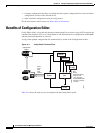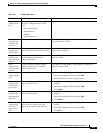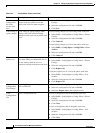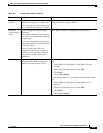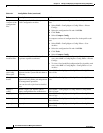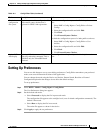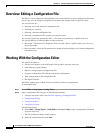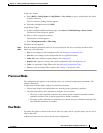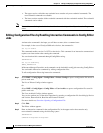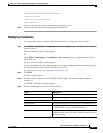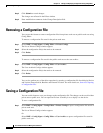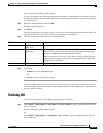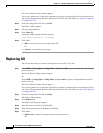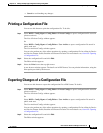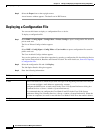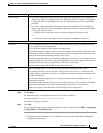
10-10
User Guide for Resource Manager Essentials 4.1
OL-11714-01
Chapter 10 Editing and Deploying Configurations Using Config Editor
Working With the Configuration Editor
• The upper section, called the non-credential area contains only non-credential commands. The
non-credential commands are editable.
• The lower section contains all the credential commands with the credentials masked. The credential
commands can be edited.
Note Do not delete or edit the placeholder that describes the credential position. If you do so, the file generates
errors.
Editing Configuration Files by Handling Interactive Commands in Config Editor
Jobs
An interactive command is the input you will have to enter, after a command runs.
For example, in the case of Catalyst 5000 series devices, the command is:
set vtp v2 enable
This command enables version 2 of VTP on the device. This command is an interactive command and
requires user intervention after running the command.
You can download this command through ConfigEditor using:
#INTERACTIVE
set vtp v2 enable<R>y
#ENDS_INTERACTIVE
In Resource Manager Essentials, such commands can be included in config jobs run using Config Editor.
You can handle interactive commands by editing configuration files.
To edit configuration files using interactive commands:
Step 1 Select RME > Config Mgmt > Config Editor > Private Configs to open a configuration file stored in
private work area.
The List of Private Configs window appears.
Or
Select RME > Config Mgmt > Config Editor > User Archive to open a configuration file stored in
public work area.
The User Archived Configs window appears.
You can also perform any of the editor operations by opening a configuration file for editing by Device
and Version, Pattern Search, Baseline and External Location.
For more details see, Overview: Opening a Configuration File.
Step 2 Click Edit.
The Editor window appears.
Step 3 Enter an interactive command in the configuration file, in the upper section that contains only
non-credential commands using the following syntax:
#INTERACTIVE
command1<R>response1<R>response2



